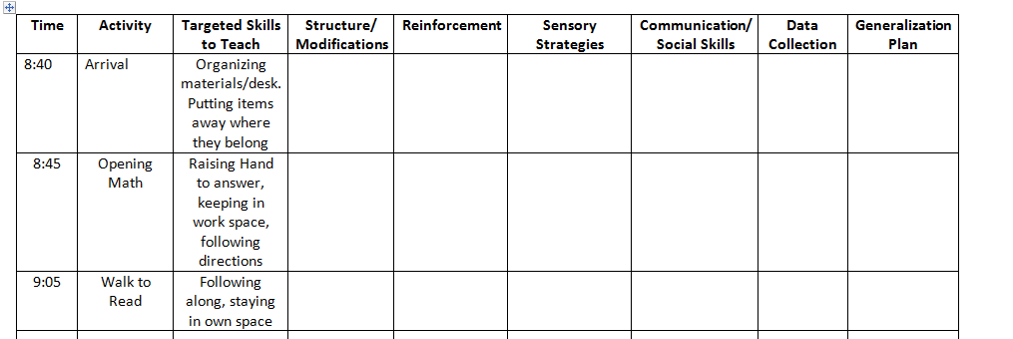“W hat would it take for my child to have a one on one para professional?” This is the layered and complex question that comes to every special education teacher at least a few times in their career that may cause them to stumble through a layered and complex answer. And this is too bad because how one answers this can have a dramatic effect on the student’s long term success as well as the school’s relationship with the family. Here are some pointers for when the big question is popped on you.
hat would it take for my child to have a one on one para professional?” This is the layered and complex question that comes to every special education teacher at least a few times in their career that may cause them to stumble through a layered and complex answer. And this is too bad because how one answers this can have a dramatic effect on the student’s long term success as well as the school’s relationship with the family. Here are some pointers for when the big question is popped on you.
1. You don’t have to stumble, it’s ok to be humble. It’s ok to say that you don’t know. You should know, but a delayed answer is much better than a bad answer. Learn your district’s policy and process for requesting additional staffing, but know that at the end of the day this is an IEP team decision. Any time such a request is made, at some point the IEP team must convene and respond formally.
2. Listen. No parent has ever wished for their child to be in special education, and no parent ever dreams of their child having such a deficit that would require the constant presence of an adult just for them. Listen and write out the concerns your parents are expressing that have lead them to see this as a need.
3. Inform. While having a paraprofessional can seem to be the golden standard for a child getting proper support, share with the parent how having such support has drawbacks as well. Help them see the big picture with types of supports.
4. Collaborate. Special learners are aided in their learning by programs and supports, not people. So what are those programs and supports that this student needs? If it is only thought of as an adult supporting a student then we set the learner on the road to over dependence quickly. Having additional specialists come join in on this conversation can help open up doors of creative possibility.
5. Break it down. Flush through the entire school day of the learner and talk through the supports and concerns that need to be addressed. Parents send their children to school everyday and often have no idea of the detail that is put into their child’s program outside of what the IEP states. Talking through the day from beginning to end in terms of how their child is supported can help build bridges of understanding and create a stronger relationship between home and school. My personal favorite tool for effectively doing this is CAPS (Comprehensive Autism Planning Systems) displayed here.
6. Pair up. Having spelled out what the student needs and when during their day, work together in identifying the least intrusive ways in which those supports can be provided. Visual schedules, reinforcement systems, even timers can often take the job of what an adult could do but without the detrimental effects of having a one on one paraprofessional.
7. Clarify. If it is agreed that additional staffing support is needed, clarify when and where. Some paras are assigned just for three weeks so to get supports up and running for a student, some are assigned just for two hours because it is only during reading and math that they need the help, and some are assigned for the full day. When students are consistently given more adult support than they need, over time they often will grow to be dependent on it.
8. Set a destination. If it is determined that the student does require access to a one on one para, clarify at what point will the learner no longer require such a significant support. What skills will they need to be able to demonstrate consistently? Remember that the goal here is not about perfection, it is about navigation.
9. Set dates. Regardless if it was determined that the student needed extra support or not, the program will need close monitoring to ensure success is being seen as hoped. Set dates to check in as a team and adjust as the student progresses. This will help educators to stay focused on the task at hand and it will help parents remain as a collaborative partner in teaming for their child.
10. Train and implement. Provide direction for all educators who will be working with this student on what the updated program entails. If possible, free up yourself at different times in the day to demonstrate what the revised plan is supposed to look like in action. This is especially important to do for new paraprofessionals, who often times have little or no training leading up to taking their job.






